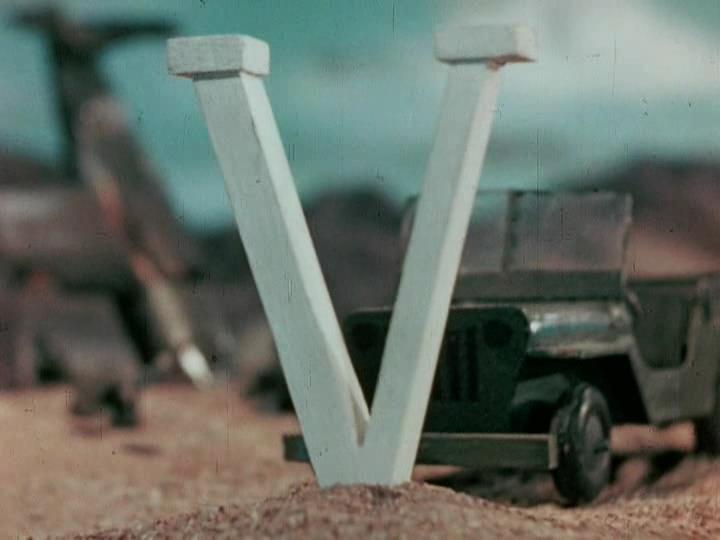Guadalcanal

A poet of the
cinema invents the beauty of the place, a tropic isle, its occupiers, and the
battle.
The technique
recalls Fischinger. No figures, not even toy soldiers
(cf. Romeo Bosetti’s
The Automatic Moving Company)...
A historical
note, and then the facts of the matter... a building program... the riposte.
Mother Goose Stories
“Little
Miss Muffet”, “Old Mother Hubbard”, “Queen of
Hearts” and “Humpty Dumpty”. Mother Goose steps out of her
book with her namesake waddling beside her, waves her wand and makes a table
and projector appear.
The verses are
intertitled line by line amongst the action. When Little Miss Muffet catches
sight of the spider (which must have been at the back of Poe’s mind when
he wrote “The Raven”), her eyes protrude roundly before she runs
away.
Old Mother
Hubbard and her dog are superbly animated on the naturalistic side (rather than
the expert cartooning of the King of Hearts or the spider), but the dog will be
laughing or smoking a pipe.
The Queen of
Hearts is a charming blonde deeply studied at the oven as she bakes. Her
inexpressible smile at the Knave’s forswearing is Leonardesque.
Humpy Dumpty is
an egg on the nest that rolls out and sprouts limbs. After his fall, a
king’s man shakes his head over the pieces of his shell, one of which
says “The End”, as king’s horses look on.
These are as good
as the Mother Goose rhymes themselves, and not too good for children. The
musical sense of Harryhausen’s scenic constructions probably stems from
the verse.
There is no
dialogue, only a delightful score that is uncredited. Rocky &
Bullwinkle’s “Fractured Fairy Tales” open similarly with a
little lady and a large book, parodying Harryhausen’s film.